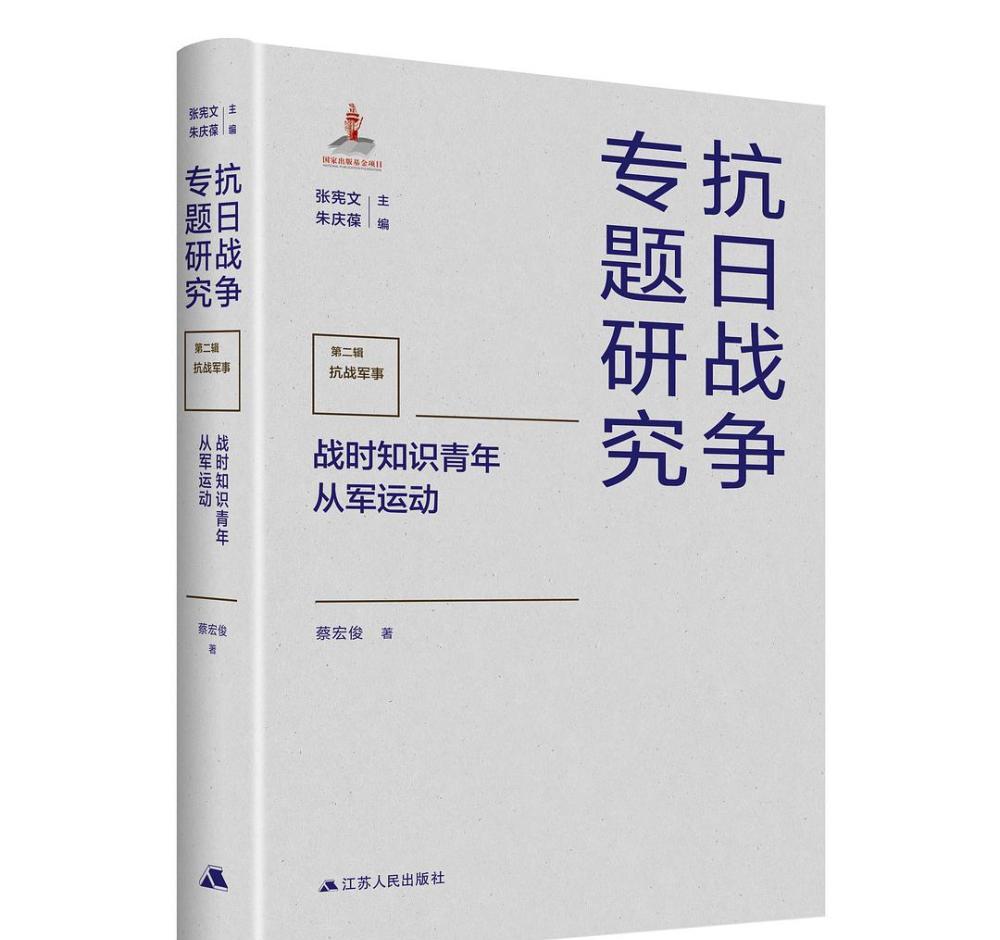Recently, Cai Hongjun, a doctor of history and associate professor of the National Defense University, published a new book entitled "Wartime Knowledge Youth Joining the Military Movement.", a history book with a slightly bland title, which was published in just over a month, entered the top five of the hot list of historical theory books, soared to the first place, and was selected by experts, scholars, media, book critics, and reader representatives from all sides to become the "Top Ten Good Books of Jiangsu People's Publishing House in 2021.".

Why does an ordinary history book break through the academic circle and attract widespread attention? This is closely related to its content. "Wartime Intellectual Youth Military Movement" focuses on a very valuable topic in the study of the history of the War of Resistance Against Japan, focusing on the intellectual youth military movement in 1944, and examines this movement in the broad context of the state and society from the perspective of national defense mobilization, reflecting the various spectra of the state and society at that time. The "Intellectual Youth Joining the Army Movement" was a national defense mobilization movement launched at the end of the War of Resistance Against Japanese Aggression, with students graduating from colleges and middle schools or students in schools as the main targets of participating in the army and participating in the war. Inspired by the slogan of "one inch of mountains and rivers and one inch of blood, 100,000 young people and 100,000 troops", 150,000 knowledgeable young people signed up for the army, setting off a temporary upsurge in the society.
This upsurge in the military, both in terms of scale and number of people, as well as from the perspective of propaganda and mobilization, was indeed the "climax" of the people's participation in the War of Resistance during the War of Resistance Against Japanese Aggression, and the mobilization, recruitment, transportation, and entry into the camp of young intellectuals in the military left a deep impression on the participants and received widespread attention from all walks of life. However, the reasons for the launch of the movement of intellectual youth in the military, the process and evaluation of mobilization, recruitment and demobilization, the treatment and combat effectiveness of the young expeditionary forces, etc., have always been controversial. On the face of it, the campaign was very successful. The enthusiasm of the knowledgeable youth for resisting the war and the organization and command of national defense mobilization deserve high praise. However, after in-depth analysis, this national defense mobilization has abandoned the existing departments of military service and military training, started from scratch, and established a new "extracorporeal circulation" mechanism. Although the movement has achieved mobilization efficiently, it has also wasted a lot of manpower and material resources and generated many new problems that cannot be solved. The movement established the Youth Expeditionary Force, which was full of vigor but later became a private force cultivated by Chiang Kai-shek and Chiang Ching-kuo. Many of the hidden historical logics behind the movement are revealed in this book.
Why didn't we mobilize students to join the army at the beginning of the War of Resistance Against Japanese Aggression, but at the end of the War of Resistance against Japanese Aggression, we mobilized a large number of young intellectuals to join the army? Why did the educators who opposed students' enlistment in the army at the beginning of the War of Resistance had almost no opposition at that time? Why did the leaders and faculty of many educational institutions take the lead in sending their sons to join the army? Why did it succeed in mobilizing so many knowledgeable young people to join the military? Why is there mixed praise for the Young Expeditionary Force? Are young people who are engaged in military knowledge proud of the country? Cai Hongjun answered in the book, and the detailed description is very detailed and full, and it is thought-provoking.
Professor Zhu Qingbao, vice president of the Jiangsu Provincial Historical Society, said: "The book completely records the ins and outs of the military movement of intellectual youth and recreates an important history of the Chinese nation's War of Resistance Against Japan. Many people are witnesses and participants in this history, including Zhang Kaiyuan, a historian of Chinese mainland, and Jiang Yongjing, a historian of Taiwan. As an important event in the War of Resistance Against Japanese Aggression, this movement has been paid attention to in history, and it is also easy for scholars on both sides of the strait to pay attention to it now. In this sense, this period of history can become a breakthrough point for the two sides of the Taiwan Strait to jointly write the history of the War of Resistance Against Japanese Aggression, which is of great practical significance. ”
The book focuses on the movement of intellectual youth into the military, and examines the movement in the broad context of the state and society, reflecting the complex aspects of the state and society at that time. The author combed through a large number of precious materials in libraries and archives, adopted the diaries, memoirs and works left by intellectuals in those years, especially quoted valuable documents and private materials provided by Taiwan compatriots, making the research closer to people's psychological state and actual situation, so it has a strong persuasive force.
Professor Hua Qiang of the National Defense University commented on the book: "The thrilling War of Resistance Against Japanese Aggression was a historical mission completed by tens of millions of Chinese with flesh and blood, and Dr. Cai Hongjun implemented this period of anti-Japanese war history into specific groups of people. The publication of the book has contributed to filling in the gaps in the study of the War of Resistance Against Japan. ”